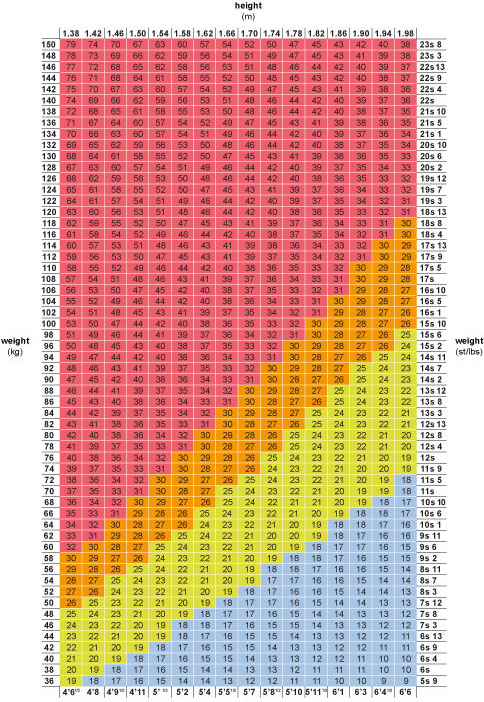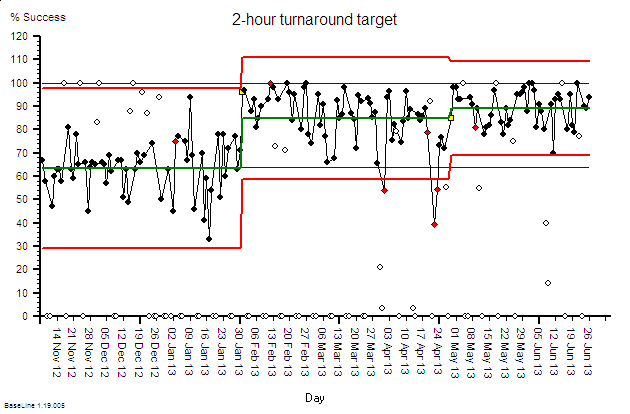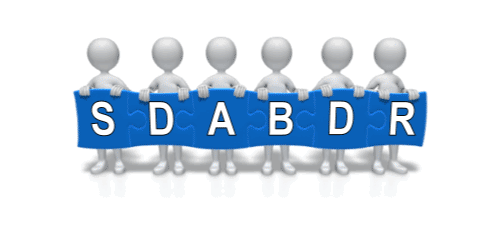Over the past few weeks I have been conducting an Improvement Science Experiment (ISE). I do that a lot. This one is a health improvement experiment. I do that a lot too. Specifically – improving my own health. Ah! Not so diligent with that one.
The domain of health that I am focusing on is weight – for several reasons:
(1) because a stable weight that is within “healthy” limits is a good idea for many reasons and
(2) because weight is very easy to measure objectively and accurately.
But like most people I have constraints: motivation constraints, time constraints and money constraints. What I need is a weight reduction design that requires no motivation, no time, and no money. That sounds like a tough design challenge – so some consideration is needed.
Design starts with a specific purpose and a way of monitoring progress. And I have a purpose – weight within acceptable limits; a method for monitoring progress – a dusty set of digital scales. What I need is a design for delivering the improvement and a method for maintaining it. That is the challenge.
So I need a tested design that will deliver the purpose. I could invent something here but it is usually quicker to learn from others who have done it, or something very similar. And there is lots of knowledge and experience out there. And they fall into two broad schools – Eat Healthier or Exercise More and usually Both.
Eat Healthier is sold as Eat Less of the Yummy Bad Stuff and more of the Yukky Good Stuff. It sounds like a Puritanical Policy and is not very motivating. So with zero motivation as a constraint this is a problem. And Yukky Good Stuff seems to come with a high price tag. So with zero budget as a constraint this is a problem too.
Exercise More is sold as Get off Your Bottom and Go for a Walk. It sounds like a Macho Man Mantra. Not very motivating either. It takes time to build up a “healthy” sweat and I have no desire to expose myself as a health-desperado by jogging around my locality in my moth-eaten track suit. So with zero time as a constraint this is a problem. Gym subscriptions and the necessary hi-tech designer garb do not come cheap. So with a zero budget constraint this is another problem.
So far all the conventional wisdom is failing to meet any of my design constraints. On all dimensions.
Oh dear!
The rhetoric is not working. That packet of Chocolate Hob Nobs is calling to me from the cupboard. And I know I will feel better if I put them out of their misery. Just one will not do any harm. Yum Yum. Arrrgh!!! The Guilt. The Guilt.
OK – get a grip – time for Improvement Scientist to step in – we need some Science.
[Improvement Science hat on]
The physics and physiology are easy on this one:
(a) What we eat provides us with energy to do necessary stuff (keep warm, move about, think, etc). Food energy is measured in “Cals”; work energy is measured in “Ergs”.
(b) If we eat more Cals than we burn as Ergs then the difference is stored for later – ultimately as blubber (=fat).
(c) There are four contributors to or weight: dry (bones and stuff), lean (muscles and glands of various sorts), fluid (blood, wee etc), and blubber (fat).
(d) The sum of the dry, lean, and fluids should be constant – we need them – we do not store energy there.
(e) The fat component varies. It is stored energy. Work-in-progress so to speak.
(f) One kilogram of blubber is equivalent to about 9000 Cals.
(g) An adult of average weight, composition, and activity uses between 2000 and 2500 Cals per day – just to stay at a stable weight.
These facts are all we need to build an energy flow model.
Food Cals = Energy In.
Work Ergs = Energy Out.
Difference between Energy In and Energy Out is converted to-and-from blubber at a rate of 1 gram per 9 Cal.
Some of our weight is the accumulated blubber – the accumulated difference between Cals-In and Ergs-Out
The Laws Of Physics are 100% Absolute and 0% Negotiable. The Behaviours of People are 100% Relative and 100% Negotiable. Weight loss is more about behaviour. Habits. Lifestyle.
Bit more Science needed now:
Which foods have the Cals?
(1) Fat (9 Cal per gram)
(2) Carbs (4 Cal per gram)
(3) Protein (4 Cal per gram)
(4) Water, Vitamins, Minerals, Fibre, Air, Sunshine, Fags, Motivation (0 Cal per gram).
So how much of each do we get from the stuff we nosh?
It is easy enough to work out – but it is very tedious to do so. This is how calorie counting weight loss diets work. You weigh everything that goes in, look up the Cal conversions per gram in a big book, do some maths and come up with a number. That takes lots of time. Then you convert to points and engage in a pseudo-accounting game where you save points up and cash them in as an occasional cream cake. Time is a constraint and Saving-the-Yummies-for-Later is not changing a habit – it is feeding it!
So it is just easier for me to know what a big bowel of tortilla chips translates to as Cals. Then I can make an informed choice. But I do not know that.
Why not?
Because I never invested time in learning. Like everyone else I gossip, I guess, and I generalise. I say “Yummy stuff is bad because it is Hi-Cal; Yukky stuff is good because it is Lo-Cal“. And from this generalisation I conclude “Cutting Cals feels bad“. Which is a problem because my motivation is already rock bottom. So I do nothing, and my weight stays the same, and I still feel bad.
The Get-Thin-Quick industry knows this … so they use Shock Tactics to motivate us. They scare us with stories of fat young people having heart attacks and dying wracked with regret. Those they leave behind are the real victims. The industry bludgeons us into fearful submission and into coughing up cash for their Get Thin Quick Panaceas. Their real goal is the repeat work – the loyal customers. And using scare mongering and a few whale-to-waif conversions as rabble-rousing zealots they cook up the ideal design to achieve that. They know that, for most of us, as soon as the fear subsides, the will weakens, the chips are down (the neck), the blubber builds, and we are back with our heads hung low and our wallets open.
I have no motivation – that is a constraint. So flogging an over-weight and under-motivated middle-aged curmudgeon will only get a more over-weight, ego-bruised-and-depressed, middle-aged cynic. I may even seek solace in the Chocolate Hob Nob jar.
Nah! I need a better design.
[Improvement Scientist hat back on]
First Rule of Improvement – Check the Assumptions.
Assumption 1:
Yummy => Hi-Cal => Bad for Health
Yukky => Lo-Cal => Good for Health
It turns out this is a gross over-simplification. Lots of Yummy things are Lo-Cal; lots of Yukky things are Hi-Cal. Yummy and Yukky are subjective. Cals are not.
OK – that knowledge is really useful because if I know which-is-which then I can made wiser decisions. I can do swaps so that the Yummy Score goes higher and the Cals Score goes lower. That sounds more like it! My Motiv-o-Meter twitches.
Assumption 2:
Hi-Cal => Cheap => Good for Wealth
Lo-Cal => Expensive => Bad for Wealth
This is a gross over-simplification too. Lots of Expensive things are Hi-Cal; lots of Cheap things are Lo-Cal.
OK so what about the combination?
Bingo! There are lots of Yummy+Cheap+Lo-Cal things out there ! So my process is to swap the Lose-Lose-Lose for the Win-Win-Win. I feel a motivation surge. The needle on my Motiv-o-Meter definitely moved this time.
But how much? And for how long? And how will I know if it is working?
[Improvement Science hat back on]
Second Rule of Improvement Science – Work from the Purpose
We need an output specification. What weight reduction in what time-scale?
OK – I work out my target weight – using something called the BMI (body mass index) which uses my height and a recommended healthy BMI range to give a target weight range. I plumb for 75 kg – not just “10% reduction” – I need an absolute goal. (PS. The BMI chart I used is at the end of the blog).
OK – I now I need a time-scale – and I know that motivation theory shows that if significant improvement is not seen within 15 repetitions of a behaviour change then it does not stick. It will not become a new habit. I need immediate feedback. I need to see a significant weight reduction within two weeks. I need a quick win to avoid eroding my fragile motivation. And so long as a get that I will keep going. And how long to get to target weight? One or two lunar cycles feels about right. Let us compromise on six weeks.
And what is a “significant improvement”?
Ah ha! Now I am on familiar ground – I have a tool for answering that question – a system behaviour chart (SBC). I need to measure my weight and plot it on a time-series chart using BaseLine. And I know that I need 9 points to show a significant shift, and I know I must not introduce variation into my measurements. So I do four things – I ensure my scales have high enough precision (+/- 0.1 kg); I do the weighing under standard conditions (same time of day and same state of dress); I weigh myself every day or every other day; and I plot-the-dots.
OK – how am I doing on my design checklist?
1. Purpose – check
2. Process – check
3. Progress – check
Anything missing?
Yes – I need to measure the energy input – the Cals per day going in – but I need a easy, quick and low-cost way of doing it.
Time for some brainstorming. What about an App? That fancy new smartphone can earn its living for a change. Yup – lots of free ones for tracking Cals. Choose one. Works OK. Another flick on the Motiv-o-Meter needle.
OK – next bit of the jigsaw. What is my internal process metric (IPM)? How many fewer Cals per day on average do I need to achieve … quick bit of beer-mat maths … that many kg reduction times Cal per kg of blubber divided by 6 weeks gives … 1300 Cals per day less than now (on average). So what is my daily Cals input now? I dunno. I do not have a baseline. And I do not fancy measuring it for a couple of weeks to get one. My feeble motivation will not last that long. I need action. I need a quick win.
OK – I need to approach this a different way. What if I just change the input to more Yummy+Cheap+Lo-Cal stuff and less Yummy+Cheap+Hi-Cal stuff and just measure what happens. What if I just do what I feel able to? I can measure the input Cals accurately enough and also the output weight. My curiosity is now pricked too and my Inner Nerd starts to take notice and chips in “You can work out the rest from that. It is a simple S&F model” . Thanks Inner Nerd – you do come in handy occasionally. My Motiv-o-Meter is now in the green – enough emotional fuel for a decision and some action.
I have all the bits of the design jigsaw – Purpose, Process, Progress and Pieces. Studying, and Planning over – time for Doing.
So what happened?
It is an ongoing experiment – but so far it has gone exactly as the design dictated (and the nerdy S&F model predicted).
And the experience has helped me move some Get-Thin-Quick mantras to the rubbish bin.
I have counted nine so far:
Mantra 1. Do not weight yourself every day – rubbish – weigh yourself every day using a consistent method and plot the dots.
Mantra 2. Focus on the fat – rubbish – it is Cals that count whatever the source – fat, carbs, protein (and alcohol).
Mantra 3. Five fresh fruit and veg a day – rubbish – they are just Hi-Cost+Low-Cal stocking fillers.
Mantra 4. Only eat balanced meals – rubbish – it is OK to increase protein and reduce both carbs and fat.
Mantra 5. It costs money to get healthy – rubbish – it is possible to reduce cost by switching to Yummy+Cheap+Lo-Cal stuff.
Mantra 6. Cholesterol is bad – rubbish – we make more cholesterol than we eat – just stay inside a recommended range.
Mantra 7. Give up all alcohol – rubbish – just be sensible – just stay inside a recommended range.
Mantra 8. Burn the fat with exercise – rubbish – this is scraping-the-burnt-toast thinking – less Cals in first.
Mantra 9. Eat less every day – rubbish – it is OK to have Lo-Cal days and OK-Cal days – it is the average Cals that count.
And the thing that has made the biggest difference is the App. Just being able to quickly look up the Cals in a “Waitrose Potato Croquette” when-ever and where-ever I want to is what I really needed. I have quickly learned what-is-in-what and that helps me make “Do I need that Chocolate Hob-Nob or not?” decisions on the fly. One tiny, insignificant Chocolate Hob-Nob = 95 Cals. Ouch! Maybe not.
I have been surprised by what I have learned. I now know that before I was making lots of unwise decisions based on completely wrong assumptions. Doh!
The other thing that has helped me build motivation is seeing the effect of those wiser design decisions translated into a tangible improvement – and quickly! With a low-variation and high-precision weight measurement protocol I can actually see the effect of the Cals ingested yesterday on the Weight recorded today. Our bodies obey the Laws of Physics. We are what we eat.
So what is the lesson to take away?
That there are two feedback loops that need to be included in all Improvement Science challenges – and both loops need to be closed so information flows if the Improvement exercise is to succeed and to sustain.
First the Rhetoric Feedback loop – where new, specific, knowledge replaces old, generic gossip. We want to expose the myths and mantras and reveal novel options. Challenge assumptions with scientifically valid evidence. If you do not know then look it up.
Second the Reality Feedback loop – where measured outcomes verifies the wisdom of the decision – the intended purpose was achieved. Measure the input, internal and output metrics and plot all as time-series charts. Seeing is believing.
So the design challenge has been achieved and with no motivation, no time and no budget.
Now where is that packet of Chocolate Hob Nobs. I think I have earned one. Yum yum.
[PS. This is not a new idea – it is called “double loop learning“. Do not know of it? Worth looking it up?]

 The BaseLine© chart above shows their daily performance data on their 2-hour turnaround target for to-take-out prescriptions (TTOs) . The weekends are excluded because the weekend system is different from the weekday system. The first split in the data in Jan 2013 is when the improvement-by-design change was made. Step 4 on the 6M Design® sequence – Modify.
The BaseLine© chart above shows their daily performance data on their 2-hour turnaround target for to-take-out prescriptions (TTOs) . The weekends are excluded because the weekend system is different from the weekday system. The first split in the data in Jan 2013 is when the improvement-by-design change was made. Step 4 on the 6M Design® sequence – Modify.









